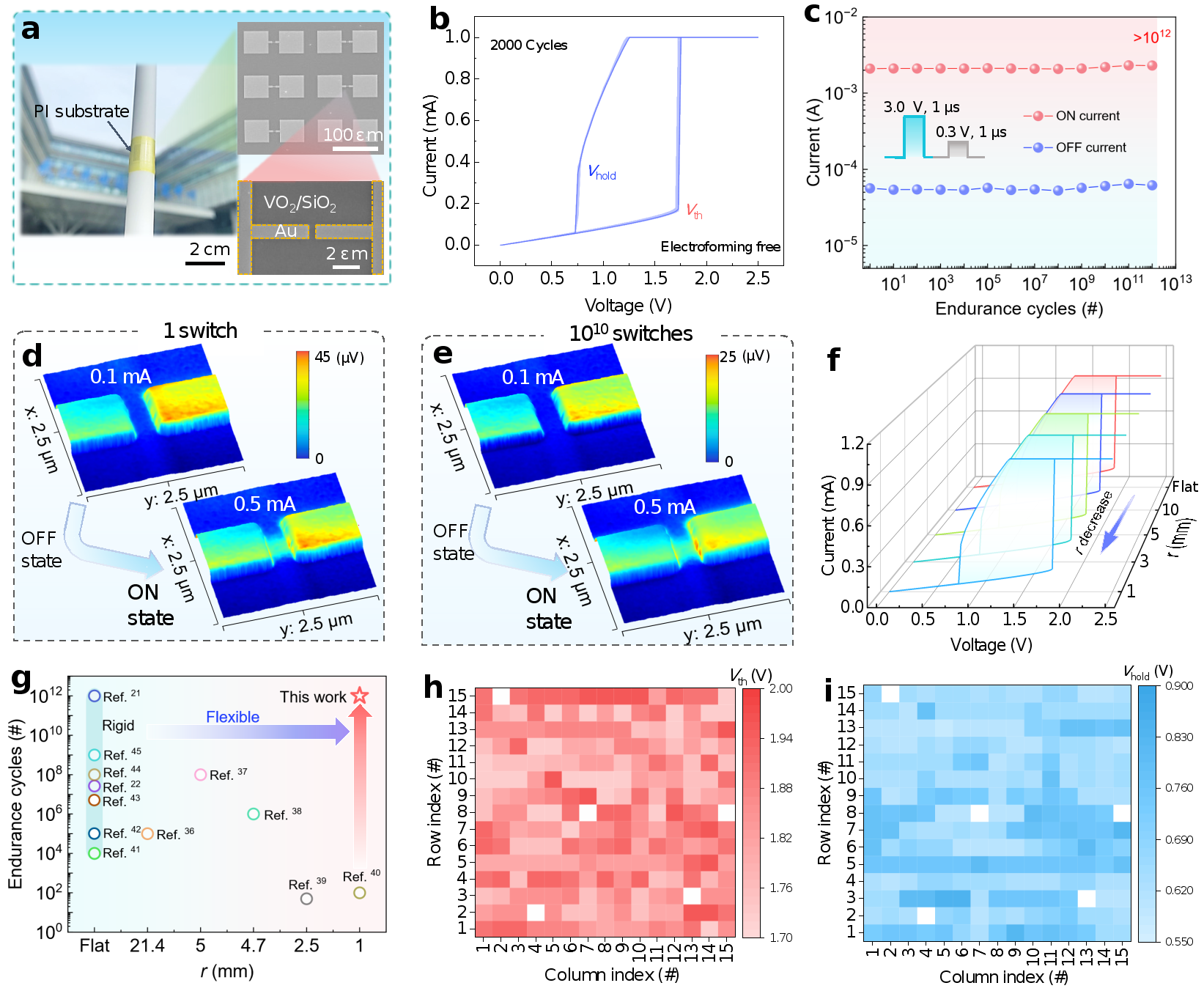
Congratulations to Zhongshao Li for his contribution as co-first author in Nature Communications
Constructing crossmodal in-sensor processing system based on high-performance flexible devices is of great significance for the development of wearable human-machine interfaces. A bio-inspired crossmodal in-sensor computing system can perform real-time energy-efficient processing of multimodal signals, alleviating data conversion and transmission between different modules in conventional chips. Here, we report a bio-inspired crossmodal spiking sensory neuron (CSSN) based on a flexible VO2 memristor, and demonstrate a crossmodal in-sensor encoding and computing system for wearable human-machine interfaces. We demonstrate excellent performance in the VO2 memristor including endurance (>1012), uniformity (0.72% for cycle-to-cycle variations and 3.73% for device-to-device variations), speed (<30 ns), and flexibility (bendable to a curvature radius of 1 mm). A flexible hardware processing system is implemented based on the CSSN, which can directly perceive and encode pressure and temperature bimodal information into spikes, and then enables the real-time haptic-feedback for human-machine interaction. We successfully construct a crossmodal in-sensor spiking reservoir computing system via the CSSNs, which can achieve dynamic objects identification with a high accuracy of 98.1% and real-time signal feedback. This work provides a feasible approach for constructing flexible bio-inspired crossmodal in-sensor computing systems for wearable human-machine interfaces.
The research is published as “Crossmodal sensory neurons based on high performance flexible memristors for human-machine in-sensor computing system” in Nature Communications, and Zhongshao Li is the co-first author.
Link to original article: https://www.nature.com/articles/s41467-024-51609-x

Structure and electrical characterization of the flexible VO2 memristor

